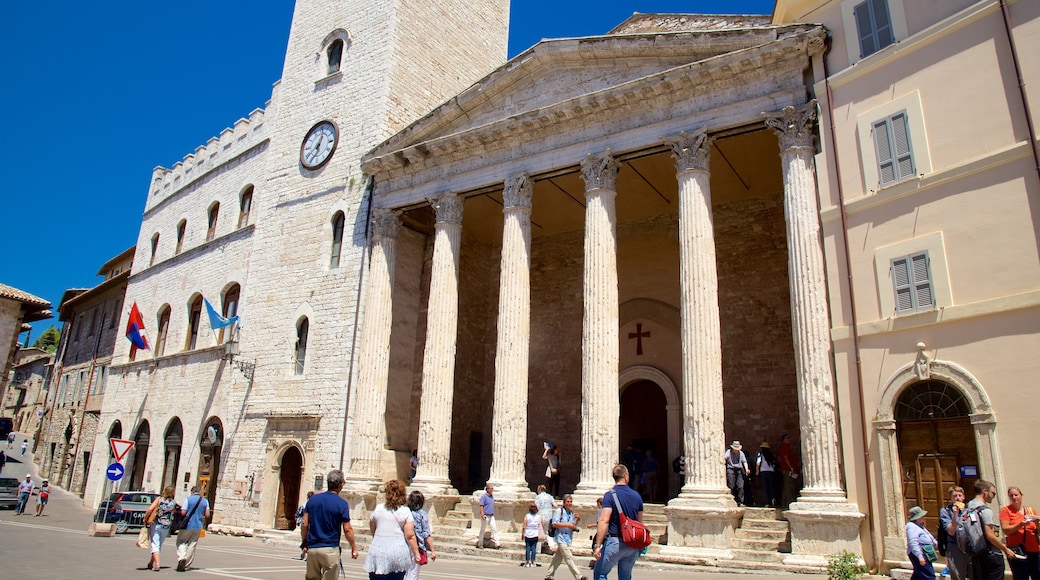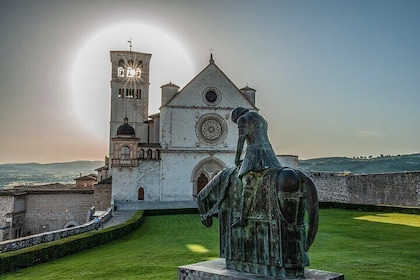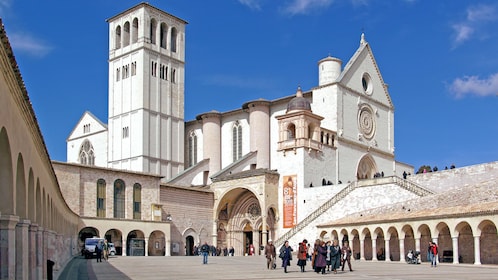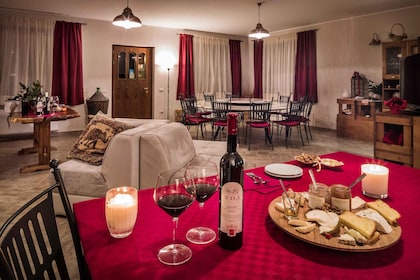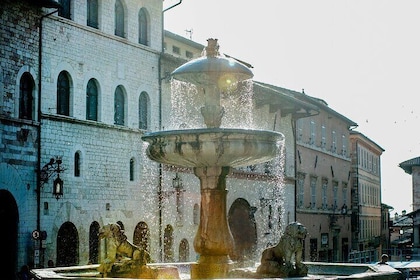Constructed in the 1st century B.C., the Roman Temple of Minerva is one of the best-preserved examples of classical architecture in all of Italy. Admire the façade before exploring the interior of a building that has awed artists throughout history. Florentine master Giotto depicted the temple in one of his lauded frescoes in the Papal Basilica of St. Francis. German philosopher and poet Goethe described it as “so perfect in design that it would be an ornament anywhere.”
Built during the time of Augustus and abandoned after the fall of Rome, the Temple of Minerva was occupied and restored by Benedictine monks in the 6th century. The temple was handed over to the Commune of Assisi in the 13th century, when it was used first as an administrative headquarters and later as a municipal prison. The interior was restored and dedicated to the Virgin Mary by order of the Pope in 1539, before being redesigned in Baroque style in the 17th century. Like the Pantheon in Rome, the Temple of Minerva owes its preservation to being transformed into a church during medieval times. Imagine this illustrious history as you admire the temple from the Piazza del Comune before exploring its interior.
Appreciate the beautiful façade of the temple, with six fluted columns holding up a superbly carved Corinthian order. Enter the converted temple and prepare to be taken aback by the lavish Baroque interior. As you walk slowly through the church, now known as the Santa Maria sopra Minerva, spend time looking at the brightly colored frescoes that adorn the walls.
The Roman Temple of Minerva is located on the northern end of the Piazza del Comune, the main square in Assisi. There is no admission fee to enter the temple, which is open daily, usually closing during lunch hours.
